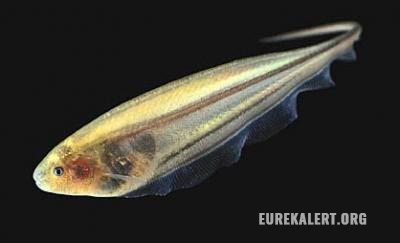
The University of California, San Francisco (UC San Francisco) study compared the electrosensing organ of sharks to its equivalent in skates. While the two are distantly related their organs react very differently.
The electrosensing organ of skates is more versatile. They can find food and others of their kinds that are either friends or mates.
The organ of a shark, on the other hand, is tuned specifically to locate prey. This additional sense is apparently controlled by genes that produce proteins called ion channels.
Ion channels manage the flow of information through the nervous system. The UC San Francisco researchers showed how a single protein could account for the differences in the nervous systems of related animals. (Related: Shark and camel blood contain antibodies that could be used to treat brain diseases.)
Shark and skates have the same electrosense, but react differently
Sharks and skates have ampullae of Lorenzini, organs that are always scanning electric fields. The electricity in those fields enter pores located around the mouth and travel to electroreceptor cells. The electroreceptors transmit this information to the brain by releasing neurotransmitter chemicals into the synapses that connected the sensory cells to other neurons.
The electroreceptor cells of skates have been widely studied. They are known to react according to the size of the electric field they encounter. A small field will trigger a minor response while a bigger field elicits a stronger reaction.
Shark electroreceptors have not been studied to the same extent. The UC San Francisco researchers learned that a shark's cells react very sharply to any electric field, no matter the size or strength. Study leaders Nicholas Bellono and Duncan Leitch reported that the differences in sharks and skates are linked to different ion channel genes in their electroreceptors.
Ion channels form pores in the skin of a cell. When they are open, they allow ions from electric fields to enter and exit the cell.
The electroreceptors of sharks and skates use the same type of calcium-conduction ion channels to detect electric fields. However, they have different potassium-conduction ion channels that regulate their responses.
The ion channels of skates are triggered by calcium and dampen the initial currents. But the equivalent in sharks is activated by voltage and tuned for large, repetitive responses.
Bellono and Leitch also noted that the electrical rest voltages of the receptor cells are slightly different. The voltage of the shark receptors is lower and in a range that tended to trigger stronger reactions in the calcium ion channels.
Shark electroreceptors also released the same amount of neurotransmitters for any response they encounter. Skate electroreceptors released different amounts depending on the size of the response.
Sharks are tuned to think of any electric field as "food"
The researchers tested their findings on individual sharks and skates. They subjected the animals to different low voltage electric field frequencies and observed their reactions.
The electric fields triggered different responses in skates. For some fields, the animals began to breathe faster. Other voltages barely fazed them.
Sharks demonstrated a single reaction to any electric field. They began breathing as if they sensed food.
Their singular reaction suggested that sharks' electrosensing system is focused on finding prey. Meanwhile, skates use their electrosensory perceptions to find other things.
Drop by Ecology.news for more articles about the senses of marine animals like sharks.
Sources include:
Please contact us for more information.























